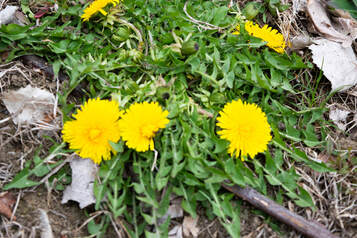 The holiday season brings a host of delicious treats and decadent meals. These foods are often nostalgic and culturally important, tasting of old family recipes or seasonal flavors. They can also tax our body’s digestive and detoxification systems leaving us feeling sluggish, bloated, gassy, or just less than ideal. Benefits of bitters Amidst all the sweet and rich foods, we invite you to incorporate the bitter flavor into your holiday season this year. Stimulating the bitter taste receptors is like running through the halls ringing a bell, alerting your digestive system to wake up and prepare to digest what you’re about to eat. It stimulates the flow of digestive enzymes and secretions that support healthy digestion. Having all of your digestive secretions operating optimally is especially important when we eat rich, heavy foods that are harder to digest. The amazing powers of the bitter flavor don’t stop there. In addition to promoting optimal digestion, bitter foods and herbs also promote healthy liver function, which is necessary for optimal detoxification and metabolism. Moreover, the bitter flavor can support a healthy appetite and help cue our bodies to feel satisfied before we overeat. Taken together, the many benefits of the bitter flavor make it a superstar during the holiday season. Bitter in the diet The bitter flavor has largely been eliminated from the standard American diet, but it has a long history of use to support optimal digestion and elimination. Our diets used to include a much greater variety of wild plants, many of which tasted bitter. Some still remain, such as dandelion greens, radicchio, and arugula (think of starting a meal with a bitter green salad). We see cultures around the world incorporating the bitter flavor into culinary traditions, such as Italian aperitifs and bitter chutneys in south Asia. Herbal digestive bitters In addition to incorporating bitter foods into your diet, you can take herbal digestive bitters before your meals to promote healthy digestion and metabolism. Herbal digestive bitters are an alcohol based extract of bitter tasting herbs. A couple squirts of herbal bitters taken straight into the mouth or added to a little water (use soda water for a bitter spritz!) 10-20 minutes before meals work quickly to get your digestive juices flowing. They can also be used to alleviate occasional indigestion, heartburn, gas, and bloating. Herbal bitters are especially handy during the holidays when you aren’t sure if bitter elements will be included in your celebrations. Carry a small bottle with you and you’ll be ready to handle all the indulgences the holiday season brings. Bitters + Aromatics Most herbal bitter formulas blend aromatic herbs with bitter herbs. Generally relaxing to the digestive tract tissue, aromatic herbs keep food moving along smoothly, while the bitter herbs support healthy digestive secretions and function. The aromatic herbs also tend to be more warming, which balances the colder nature of bitter herbs. The general rule of thumb is to use roughly equal parts of bitter and aromatic herbs. Below are some commonly used herbs in each category. You’ll notice that some herbs are both bitter and aromatic. You can mix and match aromatics to create various flavor profiles. For example, combine ginger, cinnamon, cardamom for a chai profile, or lavender and chamomile for a floral profile. Bitter herbs: dandelion root, burdock root, gentian root, artichoke leaf, yellow dock root, citrus peel, ginger Aromatic herbs: ginger, angelica, citrus peel, cardamom, cinnamon, fenugreek, fennel, star anise, lavender, chamomile Below is a recipe to make your own digestive bitters using a blend of bitter and aromatic herbs. Feel free to swap out other bitter and aromatic herbs to make the recipe your own! BASIC DIY HERBAL BITTERS Ingredients 1 Tbsp dried dandelion root 1 Tbsp dried artichoke leaf ½ Tbsp dried gentian root 1 Tbsp chopped orange peel 1 Tbsp cardamom pods 80 proof vodka Directions Combine herbs into a pint sized jar (they should only fill half the jar or less). Add enough vodka to the jar to fully cover the herbs plus a little extra (the dried herbs will absorb some of the liquid). Cover the jar and shake vigorously. Let it sit for 2-4 weeks, shaking gently once a day. If the liquid level falls below the top of the herbs after a couple of days, just add a little extra. Strain the liquid and decant into small dropper top bottles for easy dispensing. Take a couple dropperfuls before/after meals as needed. Thanks for reading! By Jennifer Porter. Jennifer is a clinical herbalist here at Railyard Apothecary. In her experience, healing begins in a safe, non-judgmental space, and she welcomes clients of all ages and identities to explore how plants can support their wellbeing. Whatever your needs may be – preventative, acute, or chronic - she will create individualized recommendations and formulas that reflect your unique experience, goals, and lifestyle. Book a consultation with Jennifer here.
0 Comments
Leave a Reply. |
Details
RAILYARDCheck in here to keep updated on news and activities at the apothecary. Archives
April 2024
Categories
All
|
railyard apothecary
*These statements have not been evaluated by the Food and Drug Administration. This product is not intended to diagnose, treat, cure, or prevent any disease. For educational purposes only.
|
|

 RSS Feed
RSS Feed
